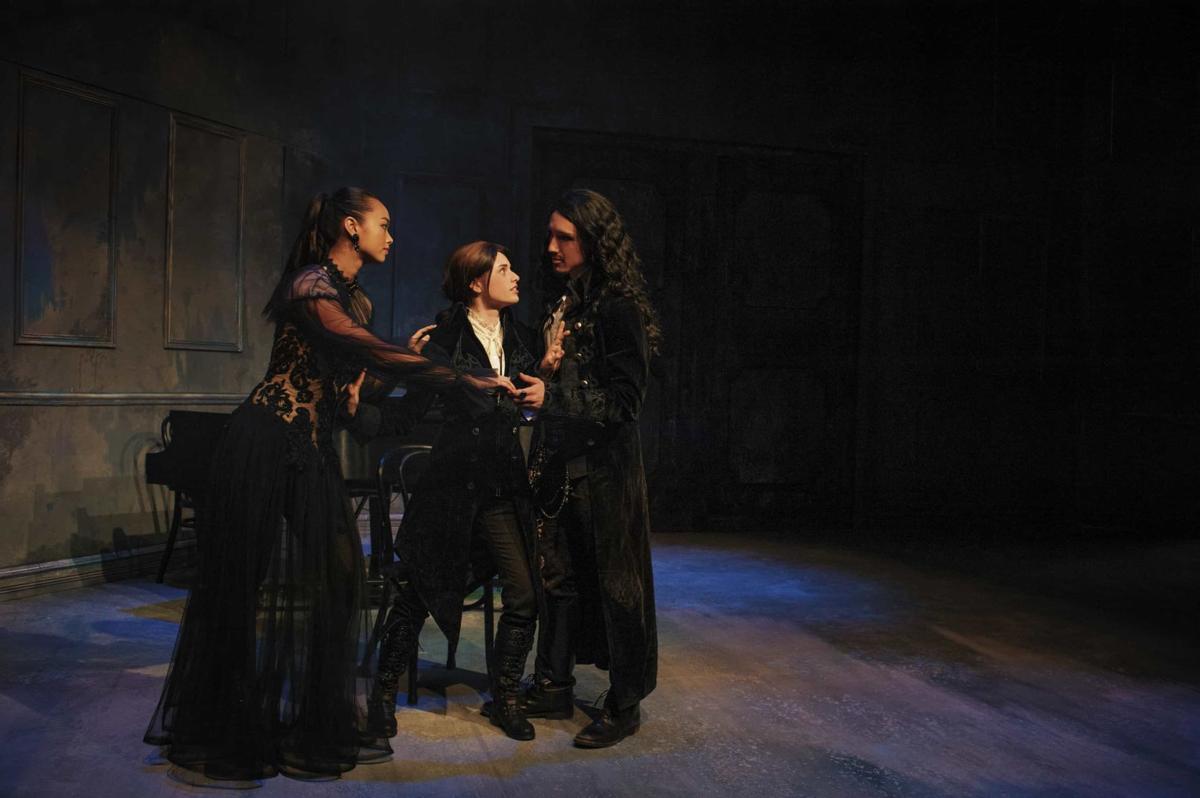There are many reasons to see Arizona Repertory Theatre’s production of “Twelfth Night or What You Will,” Shakespeare’s comedy about cross-dressing, mistaken identities and love.
Here are the most compelling ones:
Laughter. This may well be one of Shakespeare’s most delightful plays. If the actors had waited for the audience to quiet their laughter before delivering the next line at the March 8 opening, we would have been there all night. The laughter rolls almost continually, especially in the second act.
The acting: There were some scrumptious performances in this production. Vinessa Vidotto was cold and haughty, ridiculous and passionate as Olivia, the countess who falls in love with Cesario, who is actually Viola disguised as a boy. Tyler Reaser, who played Viola/Cesario probably has the most difficult role — she is surrounded by wonderful clowns who demand much of the attention. Nevertheless, she nailed the innocent and love-sick woman who is in love with Orsino, who is love with Olivia, who is in love with Cesario.
But it is the clowns who own this production, especially Malvolio, who pines for Olivia. Alec Michael Coles embraced this arrogant and foolish character with abundant talent and bravery — don’t want to spoil a surprise here, but see the play and you’ll understand.
Comedic bits: Director Brent Gibbs used every trick in his book, and probably several books, to create visual comic elements. Whether it was a trio of characters disguised as bushes, topiary that resembled something out of “Alice in Wonderland” or keystone cop-esque chases, the eyes feasted.
Physical comedy: The University of Arizona students on stage twisted, turned, bowed and bent all in the service of laughs. And they got them. Especially Conor Griffin, who played the dim-witted Sir Andrew Aquecheek with an astoundingly silly pair of gold shoes, tight pants and outrageous glasses. Griffin has an instinct for comedy that served the character — and the audience — well. Josh Dunn’s fool, Feste, may well be Cirque du Soleil material: He bent backwards so that he was nearly parallel to the floor, jumped and slid and pirouetted all over the stage with astounding grace, and always in the service of comedy.
The costumes: This production was hyped as “Goth” and there was a lot of black. But they were much more beautiful than anything else. Olivia’s gorgeous gown with a long see-through skirt and a lacy bustier was a stunner. The high-collared velvet coat worn by Duke Orsino is a point of envy — we wanted it. The costumes, by Patrick Holt, spoke to the characters and the story, and were as compelling to watch as the play.
Was the play perfect? No. It began a little too slowly and too strained. At times, some of the actors tried too hard. There were some questionable wigs in the production. And while it was suppose to be the Goth scene, there was little, other than the costumes and some of the head-banging, punk-music characters, that put it into that sensibility. Changing up the time from the Elizabethan Age, when Shakespeare wrote, often can bring fresh meaning to the Bard’s words. That didn’t happen here. But it didn’t take away from a production that was fun, funny, and done quite well.





